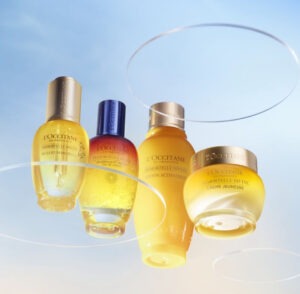Inside the Glamour and Grit of Influencer Marketing
Published on April 28, 2025, at 12:19 p.m.
by Isabella Availa.
Influencer marketing has added an additional glamorous touch to the world of public relations and has enhanced communication campaigns in unique ways. Over the past decade, influencer marketing has grown immensely. Companies are learning of the power of influencers and are willing to pay top dollar to include them in campaigns.
Influencer marketing is a collaboration between social media users and brands to promote products or services. It has been proven to work, bringing in big returns for companies, as much as $4.12 for every dollar spent on influencer campaigns on platforms like Instagram and TikTok. It isn’t just popular with big-name social media figures; micro-influencers (influencers with a follower count from 10,000-100,000) have some of the highest engagement rates in the game because of “niche appeal,” Hubspot reported.
But what do PR practitioners look for to create the ultimate influencer marketing campaign? Authenticity, engagement, appropriate aesthetics and effective communication are all important considerations.
Ensuring an effective influencer-brand fit
Amanda Pasquariello has worked in influencer marketing for both worldwide agencies like Ketchum and Edelman and in-house for skincare brands Sol De Janeiro and L’Occitane. She discussed the evolution of influencer marketing she’s seen.

“When I first started in the industry, around 10 years ago, it was really the kickstart of influencer marketing, where influencers were bloggers and they were leaning more into long-form YouTube video,” Pasquariello said. Over the past few years, Instagram and TikTok have become the main channels for promotion.
Companies wanting to use an influencer may go through a vetting process to prioritize brand safety and authenticity — maybe even check out that the influencer hasn’t previously worked with or talked about a competitor in the past year or so. PR practitioners will also make sure the influencer is familiar with the product involved in the campaign through trial periods. “[We give] them ample time to sample, test, ask questions if there’s something that they’re not 100 percent [on],” Pasquariello explained.
Building relationships with influencers
Influencer relationship-building is also a key factor to success of a campaign. Pasquariello explained no matter how big or small, making sure to connect personally with the creator is crucial, whether it’s a welcome gift and check-in texts on a brand trip you’re overseeing or hopping on frequent 1:1 calls to ensure understanding of briefs on both ends. Even engaging with creators outside of work partnerships can go a long way.
“I think also, just as a brand, engaging with whatever partners on social media is important,” she noted. “So, if [they are] at Formula 1 or are launching a podcast, liking, commenting on [posts] from the brand’s social handle, congratulations, all of those things are important to build an authentic relationship.” Pasquariello also recalls moments of birthday wishes, wedding congratulations and more through brand platforms to keep strong relations.
Complying with policies
Aside from need for consistent communication and authenticity, influencer marketing is a part of a business’s operations and must comply with guidelines from the Federal Trade Commission (FTC). In decisions made by the government agency following the 2017 disaster Fyre Festival and the rise of influencer endorsements on social media, the FTC began a new wave of endorsement guidelines for social media users and influencer marketing. These guidelines fall mainly on the shoulders of PR practitioners tasked with developing campaigns with the influencers involved, and they are tedious.
Julie Ciardiello has more than 25 years of communications experience and has held multiple senior positions for global PR agencies and pharmaceutical companies. In recent years, Ciardiello has moved her focus exclusively to health care and describes building campaigns around FTC guidelines as essential.

“You always have to adhere to the Federal Trade Commission guidelines, which essentially are focused on making it very transparent to the consumer or whoever is receiving the information that the person who is talking is being compensated,” she explained. Ciardiello also noted the role the Food and Drug Administration plays in ensuring medication promotions provide consumers the information they need to determine the best medications for them.
When it comes to influencer marketing on social media, adhering to these guidelines can make a campaign or provide setbacks. “It’s required that the spokesperson themself also disclose that they’re being compensated, and that can take different forms, some of which sound more organic than others,” Ciardiello said.
To make sure all spokespeople understand guidelines and talking points, some companies may require a sign off on briefs to ensure smooth media promotions, Ciardiello explained. Above all, when building a campaign with influencers or spokespersons, “It is the job of the public relations professional to prepare that spokesperson so that they know what [are] the primary things they have to say to meet FTC guidelines,” she said.
Influencer marketing done right
With these best practices of authenticity, communication, engagement and aesthetics, Ciardiello and Pasquariello gave some insight into influencer and spokesperson marketing campaigns that they felt have done the job in establishing a brand identity and understanding one’s audience.
Ciardiello referenced a campaign for which she worked with a celebrity as a spokesperson on the topic of living with schizophrenia. The campaign used storytelling to show that people diagnosed and living with schizophrenia can still fulfill their hopes and dreams.
Ciardiello said, “So much in the news about schizophrenia is so negative. We set out to change the face of schizophrenia by focusing more on the potential of those living with the condition.” She added that in the campaign, the celebrity spokesperson shared for the first time that his sister was diagnosed with schizophrenia when she was in her late 20s. The authenticity worked hand in hand with the stories, a key component of public relations.

Pasquariello’s pick was Summer Fridays, the viral, ultra aesthetically pleasing cosmetic brand, originally started by two influencers who knew what people wanted to see. “All of their influencer activations, events, product launches, are really like leaning into aesthetics. … They’ve done things like a pop-up coffee shop to launch a new product … just to put a smile on people’s faces,” Pasquariello said.
The future of influencer marketing
Although influencer marketing continues to evolve, it is clear that best practices aim to seek authenticity from the influencers, maintain positive relationships with influencers and their teams, provide clear and concise communications, and adhere to updated guidelines. In addition, Pasquariello and Ciardiello both emphasized the impact of teamwork on making an influencer marketing campaign truly effective. And all influencer marketing campaigns start with the goal of turning a sponsored post into the backbone of public relations — creating a meaningful connection with an audience.



